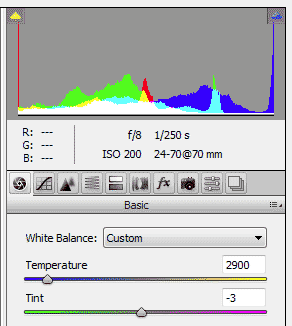Why don't cameras show a histogram based on the RAW data rather than on the JPG preview?
I know that a RAW file is not a viewable image and can't be displayed without applying curves and defining how the image should be interpreted. But why don't cameras show a histogram that accurately shows how much latitude I have in the image?
For example when shooting high contrast scenes (for example at sunrise) I know that I can overexpose the highlights to a certain extent to retain detail in the shadows and bring those areas that appear clipped in the JPG preview back in post.
But every camera I've worked with shows me the histogram based on the JPG preview and the picture style and tells me that those areas are clipped.
Is there no way of seeing the actual dynamic range captured by the sensor? Why does no camera manufacturer implement that? It shouldn't be too difficult.
Answer
Why don't cameras show a histogram based on the RAW data rather than on the JPG preview?
My notion is this: Because it would not be useful, because raw images don't yet have white balance in them, but the JPG images do have WB. For example, Daylight white balance will shift the red channel substantially higher, and the blue channel substantially lower. Incandescent white balance, the opposite. This is why we need to learn that red or yellow flowers probably get clipped in daylight. It could be your concern about headroom. So if concerned about clipping, we certainly need to know this more realistic final result. The JPG may not be precisely how raw will actually be adjusted later, but it offers a real good start on the histogram.
My image shows white balance Temperature and Tint action (from http://www.scantips.com/lights/whitebalance.html ). The spike at right end is a white balance card in the image, which a) is a white card, Not a red card, and b) should have equal RGB components.
Two things we do need to know about our histograms.
Our RGB images are of course gamma encoded, and our histograms of course contain and show this gamma encoding in the data. Therefore, "midpoint" of our histogram data is NOT 128, but is instead about 3/4 scale around 73% at 186. This is variable, Not precisely 73%, because white balance and other camera adjustments can shift and affect it (WB and contrast or Vivid, etc). But one stop down from 255 is around 3/4 scale in the histogram (certainly NOT 50%). Gamma affects the data values, but does not affect the end points or clipping. But yes, white balance can affect clipping.
Cameras often show both a single graph of grayscale luminosity, and also three RGB graphs. Only RGB is the real data (gamma encoded, but real data). Only RGB can show clipping. Because grayscale luminosity is only a math manipulation showing data that is NOT real, converted data that does not exist (unless you properly convert to grayscale). http://www.scantips.com/lights/histograms.html

No comments:
Post a Comment